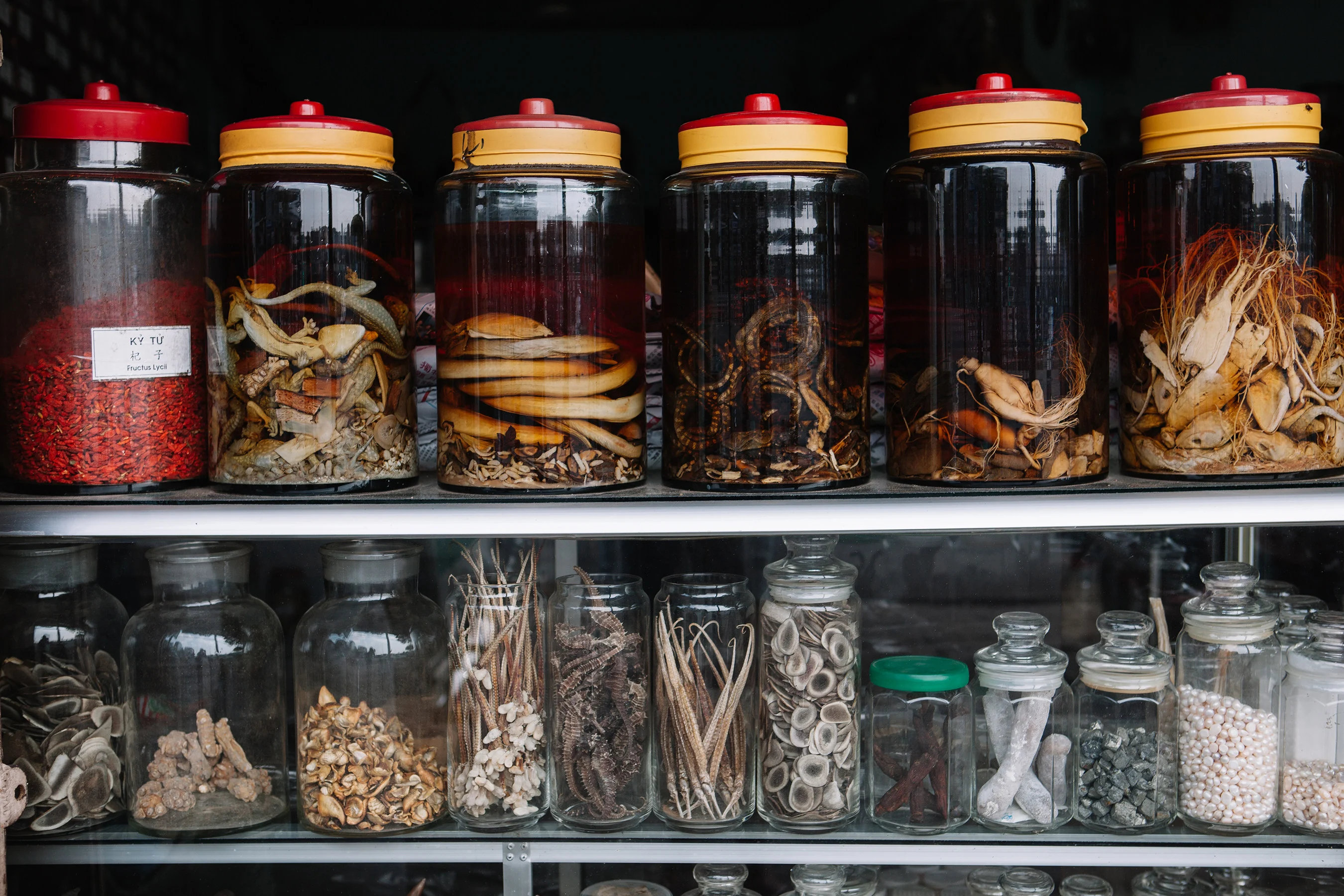Copyright scmp

It might sound like the stuff of nightmares: Chinese medicinal shop shelves lined with jars containing snakes and lizards pickled in a murky mix of liquid and herbs. But they serve a healthy purpose. Chinese medicinal wines have been around for almost as long as traditional Chinese medicine (TCM) itself. To make them, snakes, geckos and other creatures are steeped in alcohol for months or years, along with herbs, to extract their perceived medicinal “essence”. They are used as powerful tonics to treat ailments from rheumatism to arthritis, and to boost male vitality by warming the body and promoting blood circulation. The popularity of Chinese medicinal wines in Hong Kong has waned since their heyday in the 1970s and ’80s, when mainland Chinese varieties such as Shi Quan Da Bu Jiu – “the 10 complete wellness wine” – were household names. Hong Kong-based TCM practitioner Samuel To Ching-san cites several reasons for their fall in popularity. “In the last few decades, alcohol has been seen as something detrimental to your health; you can’t be taking medicinal wines before driving or before work, and preparing Chinese medicinal wines takes time, something that modern lifestyles have less and less of,” he says. But according to To, it is the wines’ alcohol content that helps make them fast-acting and effective. “Alcohol acts as a conduit, directing medicinal effects and helping the medicine reach the affected area quickly,” he says. “It also has a synergistic effect, dissolving the active components of herbs into the wine,” making it easier for the patient to absorb them. To adds, however, that Chinese medicinal wines’ efficacy is only relative to other forms of TCM; “the speed of modern medicine has left this advantage in the dust”. Brewing medicinal wines and elixirs has been part of Chinese culture for almost 2,000 years. Ancient oracle bones from the Shang dynasty (1600BC-1046BC) reveal the earliest uses of wine in rituals and medicine. During the Han (206BC-AD220) and Jin (265-420) dynasties, Taoist alchemists concocted mystical elixirs in their quest for immortality, sometimes with dangerous results. They used cinnabar – a toxic ore of mercury – and rare minerals in medicinal wines. Later, in the Tang (618-907) dynasty, Sun Simiao, known as China’s king of medicine, refined wine-based remedies for ailments ranging from fatigue to arthritis, recording the recipes in texts that would endure for centuries. During the Ming dynasty (1368-1644), Chinese doctor Li Shizhen catalogued hundreds of tonics infused with everything from ginseng to wolfberries and even snake in his book, Bencao Gangmu, or the Compendium of Materia Medica, enshrining their use in Chinese medicine. Snake wines are on the list of Hong Kong’s intangible cultural heritage. To make them, the defanged animals are gutted and then steamed and immersed in spirits such as yellow wine with medicinal herbs. The wine is aged for one to two years and is said to be good for “expelling wind and dampness”. In TCM, wind and dampness are related to joint and muscle pain, stiffness and swelling. Removing them from the body is also believed to boost core energy, strength and overall vitality. Depending on the combination of ingredients, medicinal wines can help with a variety of ailments related to the circulatory system, from rheumatism and joint pain to period pain, indigestion and cold hands and feet. Snakes and lizards are not a necessary ingredient for these wines; many of them are infused with ingredients such as ginger, cinnamon, cloves, Sichuan peppercorns, safflower, goji berries and ginseng. To says that, because of the alcoholic nature of wine therapy, there are several things to keep in mind. “People who are taking sleeping pills, antidepressants, antibiotics, anticoagulants, oral antidiabetic drugs, antihypertensives and even painkillers should not use wine therapy,” he warns. “Sometimes it could worsen the condition; it’s best to consult your prescribing doctor to see if they can be taken together,” he adds. Since wine therapy usually needs to be taken over time, To suggests taking small shots daily. “There are different ABVs [alcohol levels] when it comes to medicinal wines. Patients shouldn’t take more than 30ml a day for the stronger ones and no more than 50ml a day for the milder wines,” To says. “It’s better to drink the wine after meals and not on an empty stomach, and if you’re taking it for wellness reasons such as warming up cold hands and feet, then I suggest drinking it in alternating weeks, such as one week on and one week off.” To also says that it is difficult to control medicinal wines’ potency. “Depending on the length of time that it’s been infused and the quality of the herbs used, it is hard to gauge the efficacy of the wines. In contrast, it is a lot easier to gauge the effects of herbal medicine and acupuncture.” Despite these caveats, To still believes that medicinal wine therapy has a place in TCM. “It has fallen out of favour in recent years, but it is the best therapy for certain conditions if used correctly. We should not forget this part of TCM culture.” Like what you read? Follow SCMP Lifestyle on Facebook, X and Instagram. You can also sign up for our eNewsletter here.



